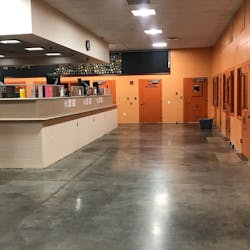Correctional security technology must be leveraged during pandemic crisis
Jails and prisons, however, typically have robust security systems in place to protect them from other threats. Video monitoring and access control systems already help create safe and secure environments for inmates, staff and visitors. With a few additional steps, integrated security systems can help mitigate health risks as well.
Video Surveillance Systems
Many correctional facilities have already adopted comprehensive video surveillance systems to monitor activity throughout a complex, often for common security threats like drugs, drones and phones. Those same systems can be adapted to solve some of the challenges COVID-19 has created. For example, officers can use video to monitor congregation areas or chokepoints across a facility to ensure social distancing measures are being taken, when possible. Staff can review those problem areas and determine better ways to organize spaces or adjust shifts to compensate for social distancing.
Integration with your access control system can provide additional layers of security, such as logging access to particular areas in a complex and generating a video surveillance audit trail, should a medical incident occur. Video surveillance can also be used for training purposes and as a way to drive further operational efficiencies. While the COVID-19 pandemic has offered many lessons for correctional officers, additional training can keep them prepared for the next health crisis within a facility, and video serves as a resource in those training efforts.
Access Control Systems
Mitigating the spread of illness or disease relies in large part on limiting its path through a facility. Access control systems — already implemented in many cases to direct the movement of inmates, staff and visitors — can also be used to help reduce the risk of transmitting illnesses.
For example, a PLC-based door control system with touchscreen control stations can be set up to create smaller release groups, encouraging social distancing in the detention space. These systems also track when individual cell doors were opened, which can assist contact tracing should a case be identified. In administrative areas with card readers, officers using keycards or electronic fobs to open doors also leave audit trails of their movements. Should an officer or inmate later show signs of illness, staff can follow this digital audit trail to potential points of contact.Access control systems can also protect facilities from having visitors introduce health and safety risks. Integration with an electronic visitor management system can generate an accurate and accessible record of who visited the facility and when they were there. Should a visitor or contractor fall ill, staff can consult these records and conduct contact tracing throughout the facility.
These systems may also be able to pre-register visitors and reduce the physical interaction between staff and visitors. This replaces a paper logbook system in which staff may struggle to quickly find details like when a particular individual visited. A digital tool offers a simple search to recall months — or even years — of records, as well as verify compliance with safety or PREA training.
Human Temperature Screening
Along with current access control systems, human temperature screening technology can provide improvements in the policies and procedures protecting inmates, staff and visitors. Identifying potentially ill inmates before they enter a facility would allow staff to isolate them and prevent contact with healthy inmates. During the booking process, an inmate could undergo human temperature screening and, should they show an elevated temperature, be placed in isolation and subjected to additional screenings if needed.
This technology can also help protect visitors and staff as they enter the facility to conduct their business. A model oriented toward high throughput can screen people in a public place and flag staff if someone shows an elevated temperature. Additional screenings or denial of access can prevent potentially ill visitors and staff from spreading illness to others.
Integrated with access control systems, screening could even allow staff to deactivate access for officers who show signs of illness. While this technology does require increased data security to protect private health information — and should be used only after consulting current policies and procedures — it is a powerful resource to augment existing security systems.
Interoperable Communications
Technology within existing security systems should be closely integrated to ensure seamless operation whenever a threat enters an environment. For example, if a medical incident occurs, a system should support the efforts of officers in coordinating activity while also preventing the spread of infectious diseases like COVID-19. Video surveillance provides real-time feeds, which staff can use when coordinating responses, but if that information — along with files, text messages and voice/radio transmissions — could be combined into a single platform, that could better support a response team and protect them from potential threats.
An interoperable communications platform combines information from an existing security system into a single source to coordinate responses. When a medical emergency happens, correctional officers, medical staff, emergency medical responders and jail administrators can all coordinate on this platform to accelerate response to the right areas and avoid disrupting other areas — reducing the potential for viral spread. Key personnel are informed and engaged, and the facility as a whole is better protected.With minor changes and enhancements, many existing security systems can be used to support facilities’ efforts in reducing the spread of diseases like COVID-19. Video monitoring and access control systems, along with other integrated technology like human temperature screening and an interoperable communications platform, can help mitigate health and safety risks and promote a more secure environment for everyone in a correctional facility.
About the author: Steve Baker is a sales engineer at STANLEY Security. Steve's area of expertise is corrections and the complex integrations required within the justice space. He started with STANLEY Security in 2008 and joined the Corrections group in 2011. His current role as a sales engineer allows him to help local, state and federal law enforcement agencies find the best solution for their specific environment.
About the Author




